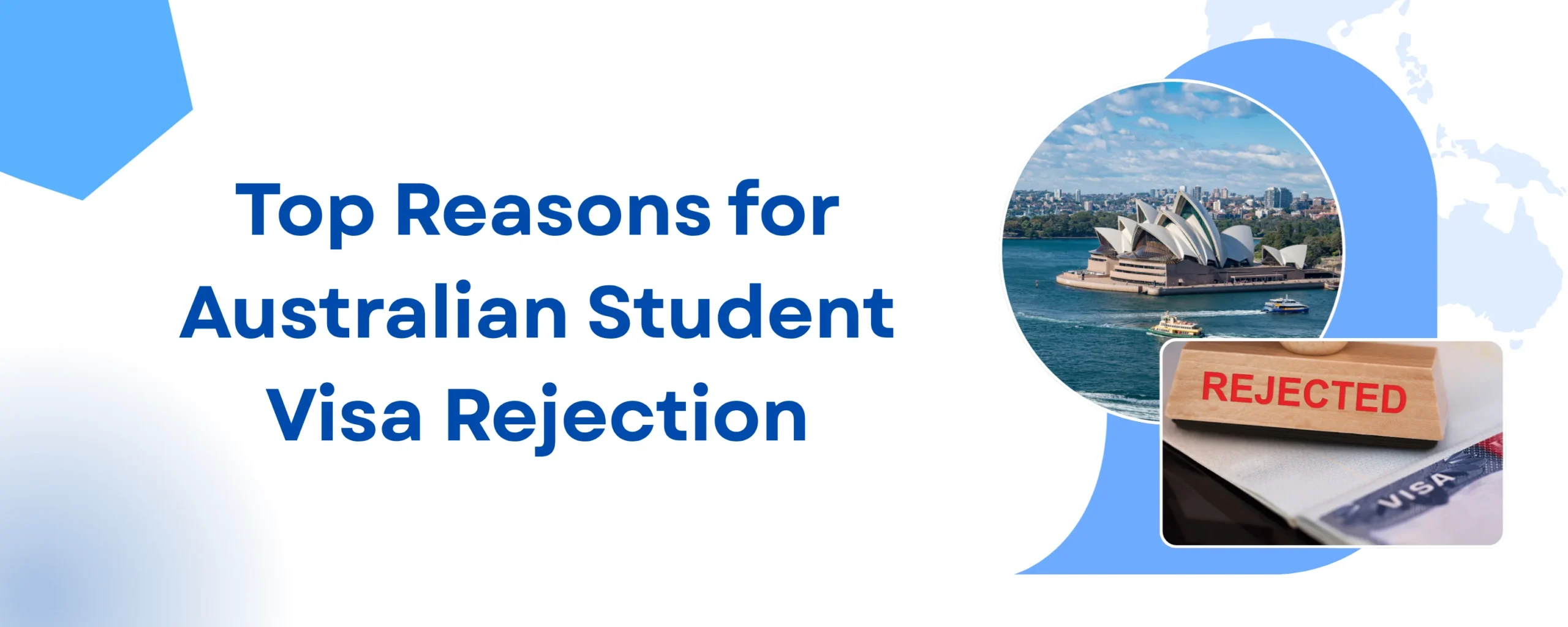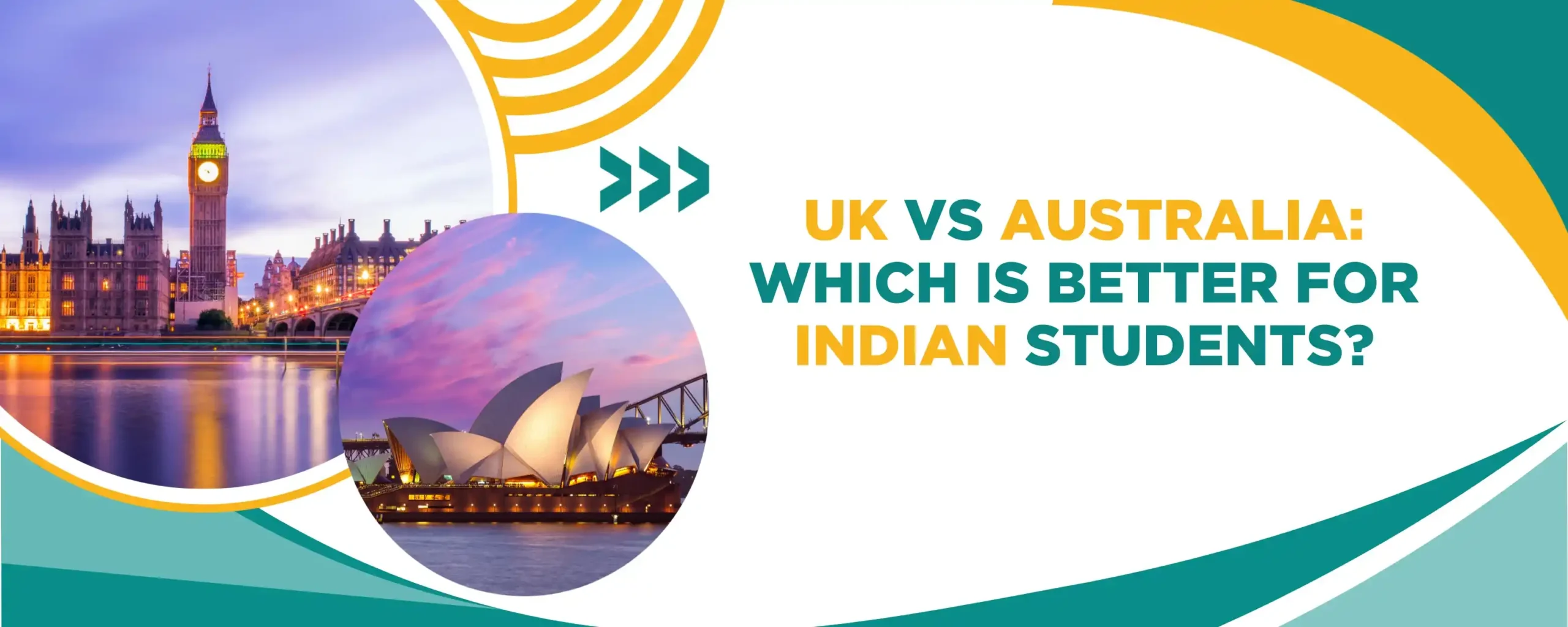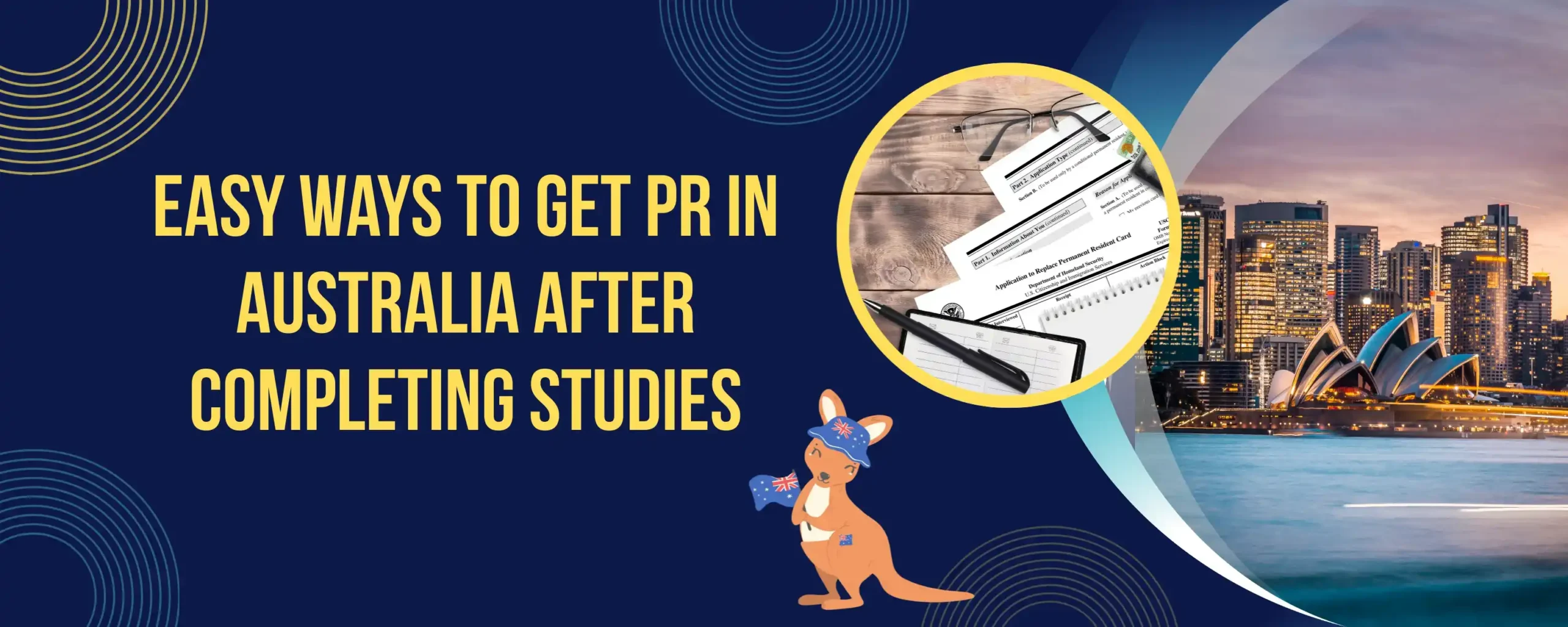So, you’ve decided to study in Australia, an exciting choice! It is one of the most popular destinations for international students simply because of its world-class universities and vibrant lifestyle. And before you pack your bags, there’s one big step you need to clear: getting your student visa. But do you know the Australia student visa rejection rate? It’s 50%. Yes, that means you have the same chance of rejection as approval. For many Indian students, stricter rules, and tougher checks have made the process even harder. So how do you tilt the stats in your favour? Protect your visa from rejection. And the only way you can do that is if you know what mistakes to look out for. In this blog, we’ll share the common reasons for Australian student visa rejection and how you can avoid them and improve your chances of successful visa application.
Incomplete or Incorrect Documentation
Your documents are your visa application’s backbone and a proof. The Australian Department of Home Affairs carefully verifies every detail, and any missing or incorrect paperwork can lead to rejection. Common mistakes include: missing documents like offer letters or bank statements, outdated identification papers, invalid or torn passport or translations that don’t match official requirements. Sometimes, students also submit false information or unclear photocopies, which can make verification harder.
To prevent this, you need a checklist and a careful eye:
- Create a checklist of all required documents from the official immigration website and tick them off one by one.
- Double-check that every piece of information is current, correct and signed.
- Ensure all non-English documents are translated by a certified professional.
- Scan documents clearly because blurry copies can cause unnecessary delays.
Remember, accuracy and completeness are non-negotiable. A single missing document can stall your entire application, so before submitting take the time to organize and verify everything. This one step can save months of frustration and give your visa a stronger chance of approval.
Failure to Meet Health Requirements
Australia places a high priority on the health and well-being of its community. For this reason, all student visa applicants undergo medical examinations conducted by panel doctors approved by the Australian Government. These typically include a chest X-ray, general physical examination, and tests for tuberculosis, HIV, and other infectious diseases.
If a student fails to disclose a pre-existing condition that could pose a public health risk or not completing the required tests with an approved physician, the visa can be refused.
To meet health criteria:
- Book your medical exam with an approved doctor early to avoid last-minute issues.
- Follow treatment recommendations before submitting reports.
- Keep copies of all test results and ensure they are directly sent to immigration authorities.
- Get the Overseas Student Health Cover (OSHC) from the companies approved by the immigration office with validity for the period you are staying in Australia.
OHSC covers medical and hospital expenses while studying in Australia. If you don’t have an OSHC, your health insurance is not the only thing at risk, you risk having your visa rejected.
Lack of Genuine Temporary Entrant (GTE) Intent
One of your biggest visa requirements is to pass the Genuine Temporary Entrant (GTE) which operates as an integrity measure. It’s essentially a statement where you prove to the visa officer that your only intention in Australia is to study and that you will return to your home country once your course is complete. This helps the Australian Government understand why you want an Australia Student Visa. You are required to provide a personal statement along with the application, which will be evaluated for further consideration. Now, when assessing an applicant’s GTE, immigration officers consider a range of factors, which are as follows:
- Reasons for not studying at home, even if there is an availability of a similar degree.
- Importance of the course to the applicant’s future, and outline how your education relates to your chosen course.
- Immigration history of the applicant, ensure your previous Visa history is positive.
- Explanation of gaps if any, details of your previous education, and employment.
- Demonstrate your ability to cover tuition and living costs.
- It is crucial to show your commitment to following Australian Immigration Rules.
- Failure to follow English Requirements.
If you fail to include a personal GS statement, or you do not adequately address specific aspects of this requirement with appropriate supporting documentation, this will lead to a student visa refusal. Common GTE mistakes include:
- Overly vague study plans.
- No clear career link between your chosen course and future goals.
- Failure to explain why you’re not studying in your home country.
A strong GTE should:
- Tell your personal education story that answers why this course, why this university, why Australia.
- Show genuine research about your field. Then, link the course you’ve chosen to your future plans.
- Present clear plans to return home after graduation. Mention your strong ties to your home country, such as family, job prospects, or property, to show you have a solid reason to return.
Students can craft a compelling and authentic GTE statement with La Forêt Education
that addresses all these points. With the right guidance, you can present your case in a way that convinces even the most skeptical visa officer.
Insufficient Financial Proof
We all know that education overseas is expensive, so it’s natural that any country will want to ensure their visa applicants have enough funds to support their education and the cost of living. The Department of Immigration and Border Protection (DIBP) wants anyone applying for a student visa to prove their ability to finance their studies in Australia by submitting financial documents such as personal bank statements, salary slips, and proof of income. These are carefully verified, and if they fall short, your visa application can be rejected.
Currently, the financial requirement includes showing proof of approximately AUD 20,000 (₹1,100,805) for annual living expenses, plus your first year’s tuition fees and travel costs. If you are bringing family members, the required amount will be even higher. This ensures the Australian government that you can pay your way through your studies without financial hardship.
Many students believe they can apply for a visa before arranging the finances. Hence, leading to a higher Australian student visa rejection rate. Even the Department of Immigration and Border Protection (DIBP) reported it as the most common reason for visa denials. Other common pitfalls include showing funds that have been in the bank for only a short period (this can look like you borrowed money just for the visa application) or submitting unclear or unverified documents. To prevent this, you need to provide clear, verifiable evidence. The clearer and more consistent your financial evidence, the better your chances of a smooth approval.
Low English Language Proficiency
If you’re planning to study in an English-speaking country, you’re going to have to speak English. This means that you’re going to have to meet the English language requirements to get your student visa approved. You have to demonstrate your English language skills by taking an approved test, such as the IELTS, PTE, TOEFL or any other equivalent exams.
All language proficiencies vary from university to university and their skill level. You must check the English requirements suggested by the Department of Home Affairs and your university. But generally, the minimum score requirements are:
IELTS: Overall band 6.0 (no band less than 5.5)
PTE: 50 overall
TOEFL iBT: 60–78
A common reason for rejection is simply not meeting these minimum score requirements. It’s crucial to prepare for these tests seriously, as a low score can invalidate an otherwise perfect application. Our advice? Don’t wait until the last minute. Start preparing well in advance, consider enrolling in a language training course, and take practice tests to get comfortable with the format and timing. A strong English score not only fulfills a key visa requirement but also gives you the confidence to succeed in your studies.
Ways to Prevent Australia Student Visa Rejection
Now that you’re familiar with the most common Australia student visa rejection reasons, you’ll have a better idea of how to avoid these. We’ve compiled a list of tips to help you avoid Australia student visa rejection.
- Firstly, make sure you have enough funds in your account before applying. This should be enough to cover any future education cost, travel and living costs that you may incur.
- Make sure that all information provided by you is accurate and your documents are valid.
- Crack the interview. If an interview is required, be prepared to confidently and honestly discuss your study plans and ties to your home country. You can prepare for the interview by practicing in front of a friend or relative.
- Crosscheck whether or not you meet the eligibility criteria for your desired course. The institution’s administration team will even provide you with written confirmation of the same if you email them about it.
- Hiring a qualified immigration agent can be quite beneficial since they are experienced in preparing applications and can provide advice on how to avoid having your Australian student visa denied.
Stay informed about policy updates from the Australian immigration website. Small steps like creating a personal application timeline and seeking expert advice can make all the difference.
What to do After Australia Student Visa Rejection?
If your visa is rejected, don’t panic! It is not the end of your journey. The first step is to carefully read the refusal letter to understand the exact reasons for the decision. You may be able to appeal the decision with the Administrative Appeals Tribunal (AAT) within 28 days or, in many cases, reapply with a stronger application. If you choose to reapply, use the refusal letter as a guide. Address the weaknesses in your previous application: fix document errors, improve English scores, add stronger financial proof, or rewrite your GTE statement. Stay positive and persistent. Many students get approved on their second try with better preparation and guidance from experts.
All in all, studying abroad is a big deal. So, you need to treat your visa application like it’s a big deal. Make sure you tick off every requirement, attach every document & certification, and get every clearance needed to get your application approved. And yes, visa rejection is often preventable by avoiding common mistakes, planning ahead, and presenting a strong case to immigration officers. With the right guidance and preparation, you can turn a ‘no’ into a ‘yes’ and embark on your exciting educational journey Down Under.
Frequently Asked Questions
1. How to Avoid Australia Visa Rejection?
Ans: Avoiding an Australian student visa rejection starts with preparation and attention to detail. Make sure all documents are accurate, complete, and submitted on time. Prove genuine access to sufficient funds, meet health and character requirements, and write a clear and convincing Genuine Temporary Entrant (GTE) statement. Achieving the required English language test scores and avoiding false or misleading information is crucial. It’s also wise to consult a professional migration expert to guide you through the process and keep you updated with the latest visa requirements.
2. Is it Difficult to Get an Australian Student Visa?
Ans: Getting an Australian student visa is not necessarily difficult, but it is strict. The process has clear rules, and even small mistakes can lead to rejection. With the current rejection rate hovering around 50%, students need to be extra careful with financial proof, documentation, and meeting all eligibility criteria. If you prepare thoroughly, submit complete and genuine documents, and follow the guidelines closely, your chances of approval increase significantly.
3. Which Country is High Risk for Student Visa in Australia?
Ans: According to recent reports, India is among the countries considered “high risk” for Australian student visas. This doesn’t mean Indian students can’t get visas, it simply means applications are scrutinized more closely due to high numbers of incomplete or non-genuine submissions in the past. Students from other countries in South Asia and parts of Africa may also face similar scrutiny. The best way to overcome this is by ensuring your application is genuine, well-documented, and fully compliant with immigration rules.





